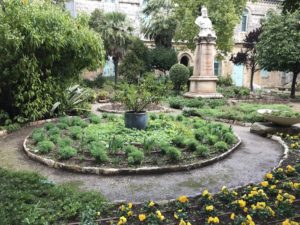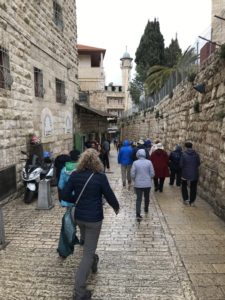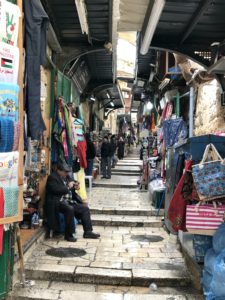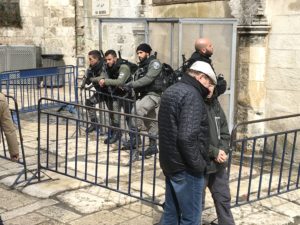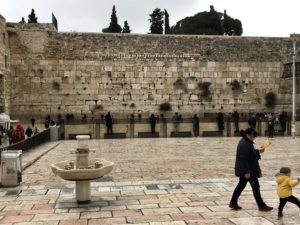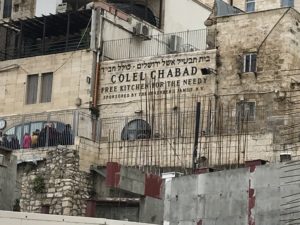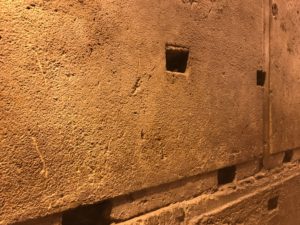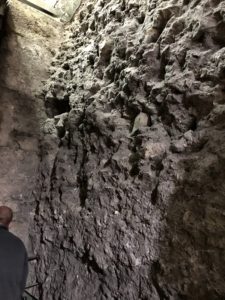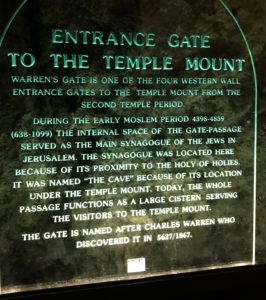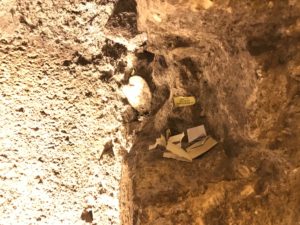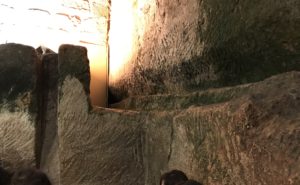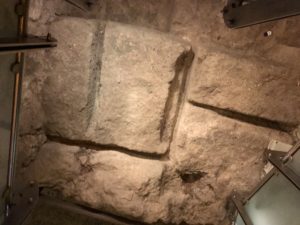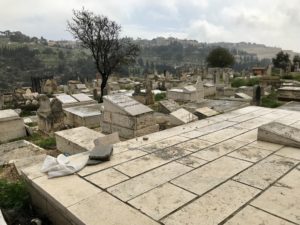 After a chance to eat and dry out a little, we travelled back for more opportunity to tour and see Old Jerusalem. Before entering the Lionsgate, we passed the Muslim cemetery that we had seen from across the Kidron Valley while on the Mount of Olives.
After a chance to eat and dry out a little, we travelled back for more opportunity to tour and see Old Jerusalem. Before entering the Lionsgate, we passed the Muslim cemetery that we had seen from across the Kidron Valley while on the Mount of Olives.
Our first stop was St. Anne’s Church. So there are two traditions, (read that beliefs, or schools of thought), about the actual birthplace of Mary. One is that she was born in the little area of Sepphoris, which was near Nazareth where she and Joseph made their home. The other is commemorated at the site of this church. St. Anne was Mary’s mother.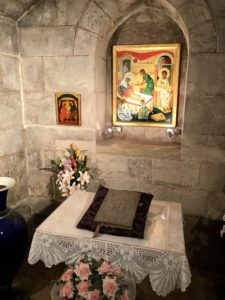
This little grotto, which as usual is well below the level of the church, features this icon of the birth of Mary, commemorating the spot.
Outside, on the church grounds, are two interesting spots. One is this little garden which I think is one of the most beautiful little spots I saw in the entire old city. And the other is this excavation site.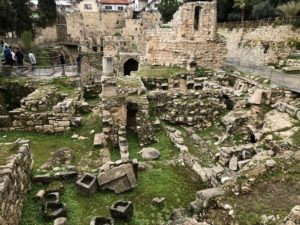
This site features archeological levels from both the Byzantine and Roman eras, and is believed to be near the area of the Pools of Bethesda, which even the pagans believed had healing powers. The Gospel story of Jesus healing the paralytic took place at these pools. Jesus met the man as he was trying to crawl his way to the pools. Back then it was believed that in order to be healed by the pools, you had to be among the first ones to enter on any day. Having encountered Jesus, he didn’t have to make it into the pools.
Here are just a few street scenes from the Old City. We had walked this first one hours earlier in the dark and rain. Then, a couple of different market streets. I know the first one is in the Muslim Quarter, and I think the other is near the edge of the Jewish Quarter.
The other two quarters are the Christian Quarter and the Armenian Quarter.
The prominent site in the Jewish Quarter is the Western Wall, what used to be called the Wailing Wall. It’s the Western Wall because it was the western wall of the original Temple Mount, the Holy of Holies, where the Arc of the Covenant was housed. Because the site of the Temple Mount has been in the hands of the Muslims for many generations, (remember the Dome of the Rock from an earlier post?), the Western Wall is the closest spot to the Holy of Holies, that Jews can come to and pray. It also famously features many notes stuck in the cracks that are the prayer intentions of countless pilgrims from over the years. Who knows how many years the oldest note has been there. It’s one of the things I meditated about while there. I also left my own prayer intention as well as one requested by some friends.
Across the square from the Western Wall is this soup kitchen sponsored by a family from New York. I didn’t realize until later that some rebar from a construction site in front of it obliterated the view of the name of the family.
We were “let off the leash” by our tour guide for some free time in the afternoon. I took off on my own little solo walkabout, to “see stuff” and find some falafel and Arab coffee. Later, I reunited with some of our group to tour the archeological tunnels under the Western Wall.
These are some of the oldest and largest stones that have been uncovered. They look “brand new” because they’ve only been exposed for a relatively short period time. No photo could do justice to how massive these stones are. It’s amazing to think about them being quarried, shaped, and moved all without the benefit of modern machinery.
Along the way we were at the oldest gate that’s been uncovered from the excavations. And below, a sign that tells about the gate. When you look closely, you can see on the left is a section of the arch, and next to that, what centuries of old rubble looks like from the destruction of the Temple Mount.
Here are some notes placed in the wall. While these tunnels are open only to people taking the tour, Jews are allowed to come down here and pray, and little alcoves have been cut out in the rock for them to do that.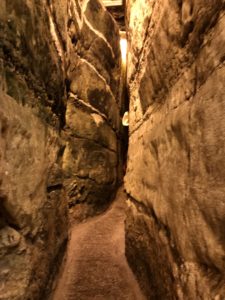
This gives you a little taste of what some of the excavation tunnels look like. A claustrophobic person would not be happy down here.
Eventually you get to the spot where the lowest courses of the wall meet the incline of the mountain. When I took these pictures I was standing on the street that ran along the wall of the Temple Mount in the time of Jesus.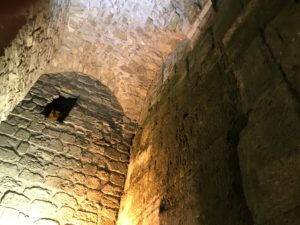
And lastly, some beginning quarry work that is more than two thousand years old. For those of you who have been reading me for awhile, you know this kind of stuff is right in my wheelhouse. I’m so glad I chose to use some of my free time to go on this tour.

